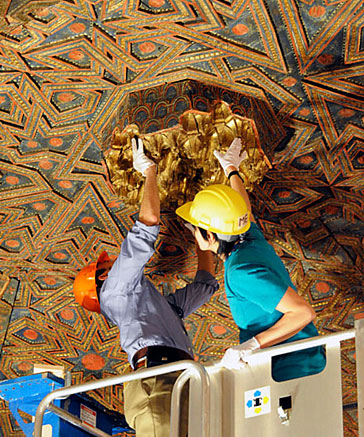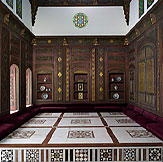The grand reopening of a suite of 15 dramatic New Galleries for the Art of the Arab Lands, Turkey, Iran, Central Asia, and Later South Asia takes place at New York’s Metropolitan Museum of Art on November 1. The greatly enlarged, freshly conceived, and completely renovated galleries will house the Metropolitan’s renowned collection of Islamic art—one of the finest and most comprehensive collections of this material in the world. Design features within the new space will highlight both the diversity and the interconnectedness of the numerous cultures represented here; multiple entryways will allow visitors to approach the new galleries—and the art displayed within—from different perspectives.
“The opening of these extraordinary new galleries underscores our mission as an encyclopedic museum and provides a unique opportunity to convey the grandeur and complexity of Islamic art and culture at a pivotal moment in world history,” stated Thomas P. Campbell, Director of the Metropolitan Museum. “In sequence, the 15 new galleries trace the course of Islamic civilization over a span of 13 centuries, from the Middle East to North Africa, Europe, and Central and South Asia. This new geographic orientation signals a revised perspective on this important collection, recognizing that the monumentality of Islam did not create a single, monolithic artistic expression, but instead connected a vast geographic expanse through centuries of change and cultural influence. The public will find galleries filled with magnificent works of art that evoke the plurality of the Islamic tradition and the vast cross-fertilization of ideas and artistic forms that has shaped our shared cultural heritage.”
Sheila Canby, the Patti Cadby Birch Curator in Charge of the Department of Islamic Art, said: “Although our galleries represent a vast territory over a long period of time, the diverse artworks shown here are nonetheless unified in several distinctive ways. Primary among these is the extensive use of Arabic script, which resulted in exceptional examples of calligraphy—often in conventional media, such as metalwork or architectural elements—and virtuosic achievements in the arts of the book. A profound love of embellishment is often expressed through intricately interlaced, complex geometric forms that are most familiar to us in textiles, woodwork, and tilework. There are many examples of luxury materials, due to royal patronage. And technical expertise of the highest level is always evident, no matter what the medium. Because the objects in our galleries are primarily secular in nature, they can easily be appreciated both for their innate utility and for their astonishing beauty, whatever the viewer’s background may be.”


